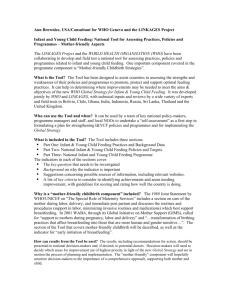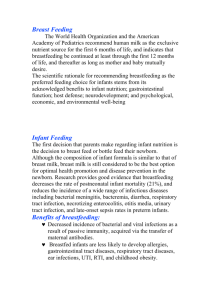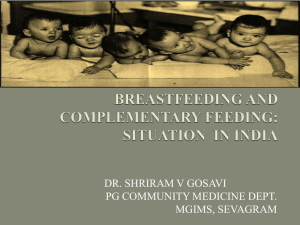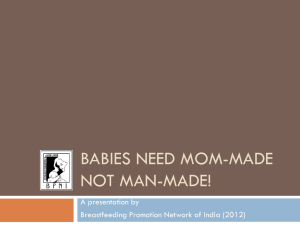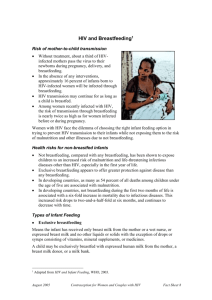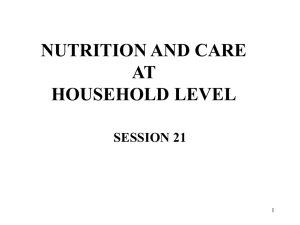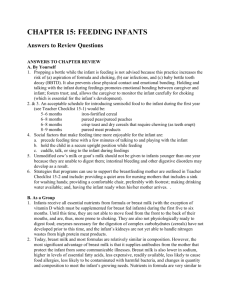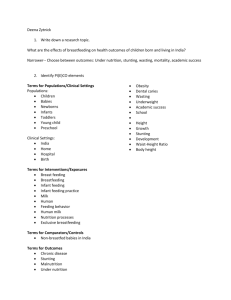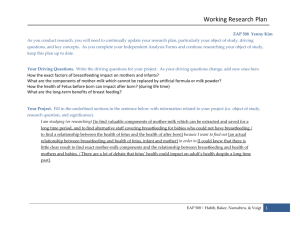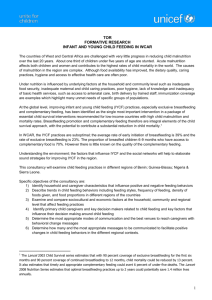Newborn Nutrition
advertisement
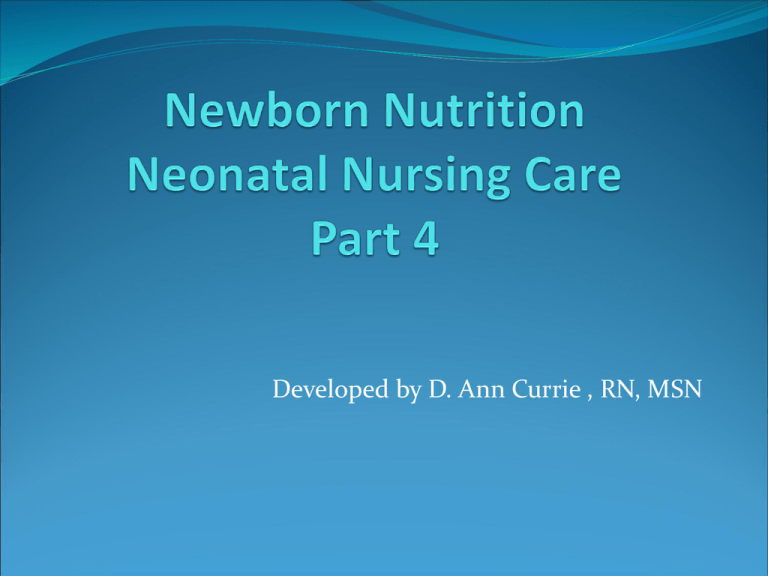
Developed by D. Ann Currie , RN, MSN Nutritional Comparison: Breast Milk 90% water Same weight gain or greater during first 3-4 months Fat is variable Primary carbohydrate is lactose, trace amounts of other carbohydrates Components of Breast Milk Whey/Casein ratio changes according to infant needs Whey components include alpha-lactalbumin, serum albumin, lactoferrin, immunoglobulins, and lysozyme Low in vitamin D, adequate vitamin C & B complex Mineral content similar Iron absorption: 50-60% Advantages of Breastfeeding Species specific Cholesterol in breast milk plays a role in myelination and neurologic development More efficient metabolism of cholesterol Composition varies according to gestational age Iron is more readily absorbed Infant Benefits Reduced risk of Type I or type II diabetes mellitus Lymphoma, leukemia, & Hodgkin’s disease Obesity Hypercholesterolemia Asthma Protection from Respiratory tract and gastrointestinal tract infections Necrotizing enterocolitis Urinary tract infections Otitis media Bacterial meningitis Maternal Physical Benefits Decreased postpartum bleeding More rapid uterine involution Burns additional calories Decreased risk of developing Breast and ovarian cancer Postmenopausal osteoporosis Maternal Psychosocial Benefits Improved maternal-infant attachment Skin-to-skin contact Tactile communication Learn behavioral cues and needs Prolactin increases feelings of relaxation and euphoria Oxytocin heightens responsiveness and receptivity toward infant Disadvantages to Breastfeeding Pain due to nipple tenderness Leaking milk when breasts are full Embarrassment about breastfeeding Feeling tied down to the demands of breastfeeding Unequal feeding responsibilities/fathers left out Perceptions about diet restrictions Limited birth control options Vaginal dryness Concerns about the safety of medications and breastfeeding Feeding Interventions: Birthing Room Assess for signs of readiness to feed Place newborn on mother’s chest Breastfeeding may begin in birthing room Assess infant physiologic status during feeding Feeding Interventions Monitor progress Education Anticipatory guidance Evaluate the need for follow-up after discharge Infant Feeding Education On Demand” feeding pattern Infant feeding cues Normal feeding/sleeping patterns Satiety behaviors Growth patterns Breastfeeding Education Positioning Latching Breast milk pumping and storage Supplementation Nutritional Comparison: Formula 90% water Greater weight gain after 3-4 months Lactose is only carbohydrate Components of Formula Whey/Casein ratio is 60:40 Whey components are beta-lactoglobulin and alpha- lactalbumin Adequate amounts of vitamins Mineral content similar Formula Feeding Education Intake and output expectations Preparation and storage of formula Feeding technique Equipment Safety precautions Growth Rates Both breastfed and formula-fed infants experience growth spurts requiring increased feedings Breastfeeding mother should nurse more frequently Formula feeding mother should slightly increase amount of feeding Influence of Culture on Infant Feeding Perception of breasts as sexual organ Perceptions of colostrum Language The End of Part IV
